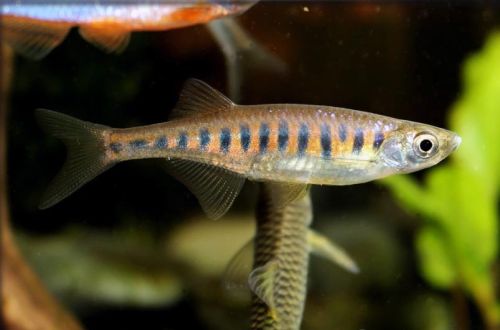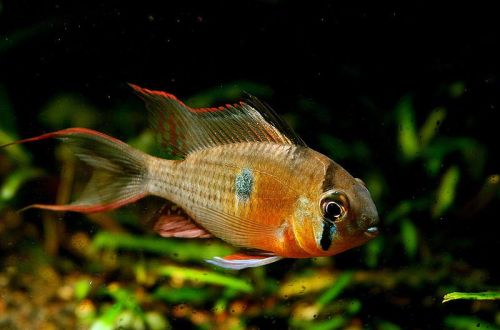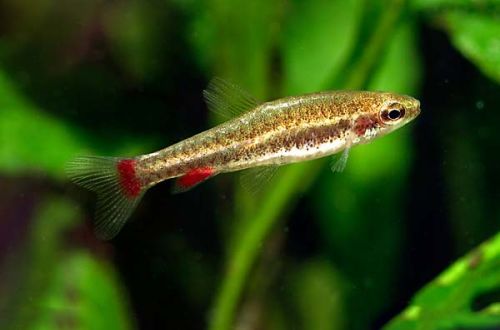
Danio Inle
Danio Inle, scientific name Devario auropurpureus, belongs to the family Cyprinidae (Cyprinidae). The fish got its name from the lake of the same name, where the main part of the population lives. Easy to keep, unpretentious, compatible with many other freshwater species. Can be considered as the first aquarium fish.

Contents
Habitat
It comes from Southeast Asia from the isolated Inle Lake, located in the central part of Myanmar (Burma). The lake is famous for its many endemic species and is one of the main attractions of the region.
Inle Lake is located in a karst valley at an altitude of 900 m above sea level. The water is clear, the depth is not great (2–3 m deep in most places), the substrates are loamy. “Vegetable islands” float on the surface, consisting of clusters of various plant species, which are the habitat of many fish.
Brief information:
- The volume of the aquarium – from 80 liters.
- Temperature – 20-24°C
- Value pH — 7.0–8.0
- Water hardness – 12–21 dGH
- Substrate type – soft sandy
- Lighting – subdued
- Brackish water – no
- Water movement – little or no
- The size of the fish is 6–8 cm.
- Food – any food
- Temperament – peaceful
- Keeping in a group of 8-10 individuals
Description
Adults reach a length of 6–8 cm. The color is silvery with orange hues. The body pattern consists of short vertical strokes that extend from head to tail. Sexual dimorphism is weakly expressed, males are practically indistinguishable from females.
Food
Unpretentious to the diet look. In the home aquarium, it will accept most popular foods designed for aquarium fish. For example, the daily diet may consist of dry foods in the form of flakes, granules. If desired, and if possible, the diet includes live or frozen food from daphnia, brine shrimp, bloodworms, etc.
Maintenance and care arrangement of the aquarium
The optimal size of the aquarium for a flock of 8-10 Danio Inle starts from 80 liters. The design uses soft soil, and a large number of rooting and floating plants. Lighting is moderate. Water movement should be kept to a minimum.
The key to successful management is high water quality within the acceptable range of temperatures, pH and dGH. In addition to the obligatory aquarium maintenance procedures (water changes, cleaning of organic waste, etc.), it is recommended to install a productive filtration system from an external filter. Such models allow you to prevent excessive movement of water and at the same time are considered the most effective.
Behavior and Compatibility
Peaceful mobile fish, perfectly compatible with other non-aggressive species of comparable size. Prefers to be in a group of 8-10 individuals. With a smaller number, it can be intimidated by other neighbors in the aquarium.
Breeding / breeding
Under favorable conditions, spawning can occur regularly. Females scatter eggs among aquatic vegetation, and males at this moment fertilize them. The incubation period lasts about 24 hours, after another two days the fry begin to swim freely. Parental instincts are not developed, the fish do not guard the masonry and do not take care of their offspring. Moreover, on occasion they will certainly eat their own caviar and fry. Only a few will survive to adulthood.
It is possible to increase the survival rate of fry if they are transplanted in a separate tank with identical water conditions in a timely manner. Usually, it is equipped with a simple airlift filter and a heater. A separate light source is not required.
Fish diseases
In a balanced aquarium ecosystem with species-specific conditions, diseases rarely occur. Often, diseases are caused by environmental degradation, contact with sick fish, and injuries. If this could not be avoided and the fish shows clear signs of illness, then medical treatment will be required. Read more about symptoms and treatments in the Aquarium Fish Diseases section.





